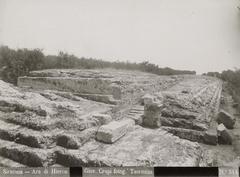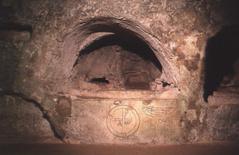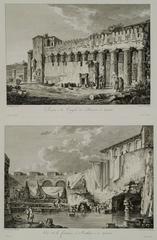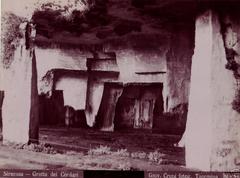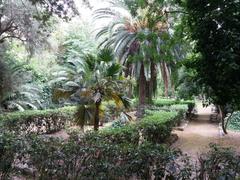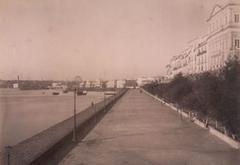Complete Guide to Torre Pizzuta: Visiting Hours, Tickets, and Syracuse Historical Sites
Date: 14/06/2025
Introduction to Torre Pizzuta and Its Significance in Syracuse
Situated in the tranquil rural outskirts of Syracuse, Sicily, Torre Pizzuta is a striking 16th-century watchtower that embodies centuries of local history and architectural evolution. Originally part of a defensive network safeguarding the region from corsair raids, the tower is notable for its robust limestone construction, crenellated terraces, and distinctive stone balcony. Beyond its military origins, Torre Pizzuta reflects the layered cultural tapestry of Sicily, having served as both a noble residence for the Gargallo family and a retreat for intellectual figures such as Tommaso Gargallo.
Today, although partially overgrown and less frequented than the city’s urban landmarks, Torre Pizzuta offers a rare glimpse into Sicily’s rural past and the enduring legacy of its fortified countryside. Its proximity to other significant sites, including Ortigia Island and the Necropolis of Pantalica, makes it an enriching addition to any cultural itinerary in Syracuse (Antoniorandazzo.it; Italia.it; UNESCO).
Table of Contents
- Introduction
- Origins and Construction of Torre Pizzuta
- Historical Context and Role
- Ownership and Notable Residents
- Architectural Features and Evolution
- Decline and Modern Status
- Visiting Torre Pizzuta: Hours, Tickets, and Tips
- Cultural and Historical Significance
- Key Events and Transformations
- Preservation and Current Challenges
- Frequently Asked Questions (FAQ)
- Practical Visitor Information
- Nearby Attractions and Amenities
- Best Time to Visit
- Cultural Etiquette and Conservation
- References
Origins and Construction of Torre Pizzuta
Torre Pizzuta, also known as Torre della Pizzuta, is located in the Contrada Pizzuta area, along Via Luigi Maria Monti intersecting with Via Antonio Lo Surdo. The name “Pizzuta” likely derives from the local almond variety “mandorla pizzuta,” once cultivated in the area (Antoniorandazzo.it). Built in the 16th century, the tower features opus incertum masonry, thick limestone walls, and cornerstones that reflect its defensive function.
The tower’s square plan, east-facing entrance, and prominent balcony supported by curved brackets are characteristic of military architecture from the late 15th and early 16th centuries. This design enabled the tower to serve as both a lookout and a residence.
Historical Context and Role
Throughout the 16th century, Sicily experienced frequent threats from pirates and social unrest, necessitating the construction of defensive towers like Torre Pizzuta. Positioned on Syracuse’s outskirts, the tower formed part of a network providing surveillance and refuge during times of danger. The surrounding area, once known as Contrada Teracati, was primarily agricultural, with scattered rural settlements (Antoniorandazzo.it).
Ownership and Notable Residents
From the 18th century until 1960, Torre Pizzuta was under the ownership of the noble Gargallo family, specifically the Marchesi Gargallo di Castel Lentini. The Gargallos were prominent in Syracuse’s cultural and social life, adapting the tower for residential use while preserving its historic features. Tommaso Gargallo, a noted intellectual of the late 18th century, used the tower as a retreat and study space, further enhancing its cultural value (Stupormundisiracusa.it; Wikipedia).
Architectural Features and Evolution
Torre Pizzuta’s architecture showcases the practical needs of rural Sicilian nobility. Integrated into a masseria complex, it retains its crenellated terrace and thick plastered limestone walls. The stone balcony above the entrance functioned as both a lookout and a status symbol. Small, strategically placed windows provided light while maintaining defensive integrity. Over time, additional agricultural structures were added, illustrating the adaptive use of rural estates (Antoniorandazzo.it).
Decline and Modern Status
After the Gargallo family’s tenure ended in 1960, Torre Pizzuta fell into neglect amid increasing urban development. The surrounding masseria is semi-abandoned, and the tower is partially concealed by vegetation. Despite this, it remains a poignant symbol of Syracuse’s rural heritage and 16th-century architectural resilience (Antoniorandazzo.it).
Visiting Torre Pizzuta: Hours, Tickets, and Tips
Visiting Hours
Torre Pizzuta is generally accessible year-round from sunrise to sunset, as it is an open-air site without formal opening times. There is no artificial lighting, so daylight visits are recommended. Hours may vary during special events (MominItaly).
Tickets
Entry is free of charge; no tickets are required. Occasionally, guided tours organized by local associations may charge a nominal fee.
Guided Tours and Accessibility
Guided tours are sometimes available during heritage festivals or by arrangement with local cultural groups. The site is not wheelchair accessible due to uneven terrain and the lack of paved paths.
Travel Tips
- Footwear: Wear sturdy shoes for uneven terrain.
- Water & Snacks: Bring your own, as no facilities exist onsite.
- Sun Protection: The site is exposed with little shade—bring a hat, sunscreen, and sunglasses.
- Photography: The tower is especially photogenic at sunrise and sunset.
Cultural and Historical Significance
Torre Pizzuta encapsulates the rural element of Syracuse’s UNESCO World Heritage landscape, complementing the city’s celebrated Greek, Roman, and Baroque monuments. The tower’s association with the Gargallo family and its role in Sicily’s Enlightenment-era culture further enrich its narrative (UNESCO).
Key Events and Transformations
- 16th Century: Constructed as part of a rural defensive network.
- 18th–19th Centuries: Residence and retreat for the Gargallo family, cultural adaptation.
- 20th Century: Decline after end of noble ownership, urban encroachment.
- Present Day: Semi-abandoned, yet accessible as a historic landmark.
Preservation and Current Challenges
Torre Pizzuta faces challenges common to rural heritage sites: environmental degradation, lack of funding, and urban pressure. Local historical societies and cultural groups strive to document, maintain, and promote the site’s value, with restoration and increased public awareness as ongoing objectives (Stupormundisiracusa.it).
Frequently Asked Questions (FAQ)
Q: What are the visiting hours for Torre Pizzuta?
A: The site is accessible from sunrise to sunset, year-round.
Q: Is there an entry fee?
A: No, entrance is free.
Q: Is the site accessible for people with disabilities?
A: No, accessibility is limited due to uneven terrain.
Q: Are guided tours available?
A: Occasionally, especially during special events or by local associations.
Q: What are some nearby attractions?
A: Necropolis of Pantalica, Ortigia Island, and the Archaeological Park of Neapolis.
Practical Visitor Information
Location and Access
Torre Pizzuta is located about 8 kilometers southwest of Syracuse city center, in Contrada Pizzuta. The site is best accessed by car via the SP14 provincial road toward Floridia. Parking is generally available along rural roadsides. Public transportation is limited; the nearest bus stop is Floridia, from where a taxi or private transfer is recommended.
Site Features and Visitor Experience
The tower stands approximately 12 meters high, with a square base, thick limestone walls, and narrow slit windows. The upper floors are partially ruined, but the ground floor and main walls remain intact, offering panoramic countryside views (Wish Sicily). Onsite interpretation is minimal, so independent research or a guidebook is advised.
Nearby Attractions and Amenities
- Necropolis of Pantalica: UNESCO World Heritage, ancient rock-cut tombs (World Heritage Site).
- Ortigia Island: Greek and Baroque architecture, markets (Secret Places).
- Archaeological Park of Neapolis: Greek Theatre, Roman Amphitheatre (Great Sicily).
The nearby town of Floridia offers basic amenities, while Syracuse and Ortigia provide extensive dining and accommodation options.
Best Time to Visit
The best period for visiting is from late spring to early autumn (May–October), with June offering comfortable temperatures and scenic landscapes (The Travel Folk). The site is rarely crowded, providing a peaceful experience.
Cultural Etiquette and Conservation
- Do not remove stones or artifacts.
- Avoid graffiti or vandalism.
- Respect the tranquility and privacy of local residents.
- Carry out any litter, as there are no bins onsite.
- Support conservation by participating in local heritage events if possible.
Safety and Accessibility
- Do not climb the ruins for safety and conservation reasons.
- The area is not wheelchair accessible.
- Insect repellent is recommended, especially in warmer seasons.
Emergency Contacts
- Local Police (Carabinieri): 112
- Medical Emergency: 118
- Tourist Information (Syracuse): +39 0931 481232
Sustainability and Responsible Tourism
- Use reusable water bottles.
- Stay on established paths.
- Support local businesses in Floridia and Syracuse.
- Follow Leave No Trace principles.
Visual and Interactive Recommendations
Look for online resources with high-quality images and interactive maps. Virtual tours and detailed photographs can enhance your planning (VisitSights).
References
- Antoniorandazzo.it
- Italia.it
- Wish Sicily
- PlanetWare
- UNESCO
- Stupormundisiracusa.it
- VisitSights
- World Heritage Site
- Secret Places
- Great Sicily
- The Travel Folk
Stay Updated
To enhance your experience and keep informed about Torre Pizzuta and other Syracuse sites:
- Download the Audiala app for guided tours and up-to-date visitor information.
- Follow local cultural organizations and Syracuse tourism for event updates.
Torre Pizzuta offers a compelling journey through Sicily’s rich rural heritage, blending history, architecture, and unspoiled landscapes. By visiting responsibly and supporting local conservation, you help preserve this unique site for generations to come.
